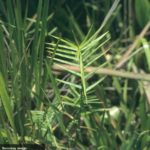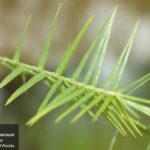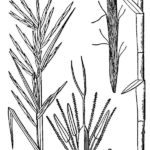Dulichium arundinaceum
USDA, NRCS. 2018. The PLANTS Database (http://plants.usda.gov, 28 March 2018). National Plant Data Team, Greensboro, NC 27401-4901 USA.
Illustration: USDA-NRCS PLANTS Database / Britton, N.L., and A. Brown. 1913. An illustrated flora of the northern United States, Canada and the British Possessions. 3 vols. Charles Scribner’s Sons, New York. Vol. 1: 340.
What is Three-Way Sedge?
Physical Characteristics
Leaves:
- Pointed in 3 directions from stem
Lower Leaves:
- Almost bladeless
Upper Leaves:
- Short, stiff, pointed blades
- 0.78-3.94 inches long
- 5-20 leaves serving as bracts
Flowers:
- 0.78-2.36 inches long
- 0.2-2 inches thick
- 6-15 rising & forming spikelets
Fruit:
- Dry
- Does not open to release seed when ripe
- Flattened
Stem:
- Creeping rhizomes
- 0.08-0.13 inches thick
Hollow stem:
Where Does it Grow?
Three-way sedge can be found along the edges of streams and swamps.
Pros and Cons of Three-Way Sedge
Three-way sedge are considered good wildlife plants. Three-way sedge is grazed by muskrats, nutria, and rabbits; while the seeds are consumed by waterfowl and small birds. Submerged portions of all aquatic plants provide habitats for many micro and macro invertebrates. These invertebrates in turn are used as food by fish and other wildlife species (e.g. amphibians, reptiles, ducks, etc.). After aquatic plants die, their decomposition by bacteria and fungi provides food (called “detritus”) for many aquatic invertebrates.




